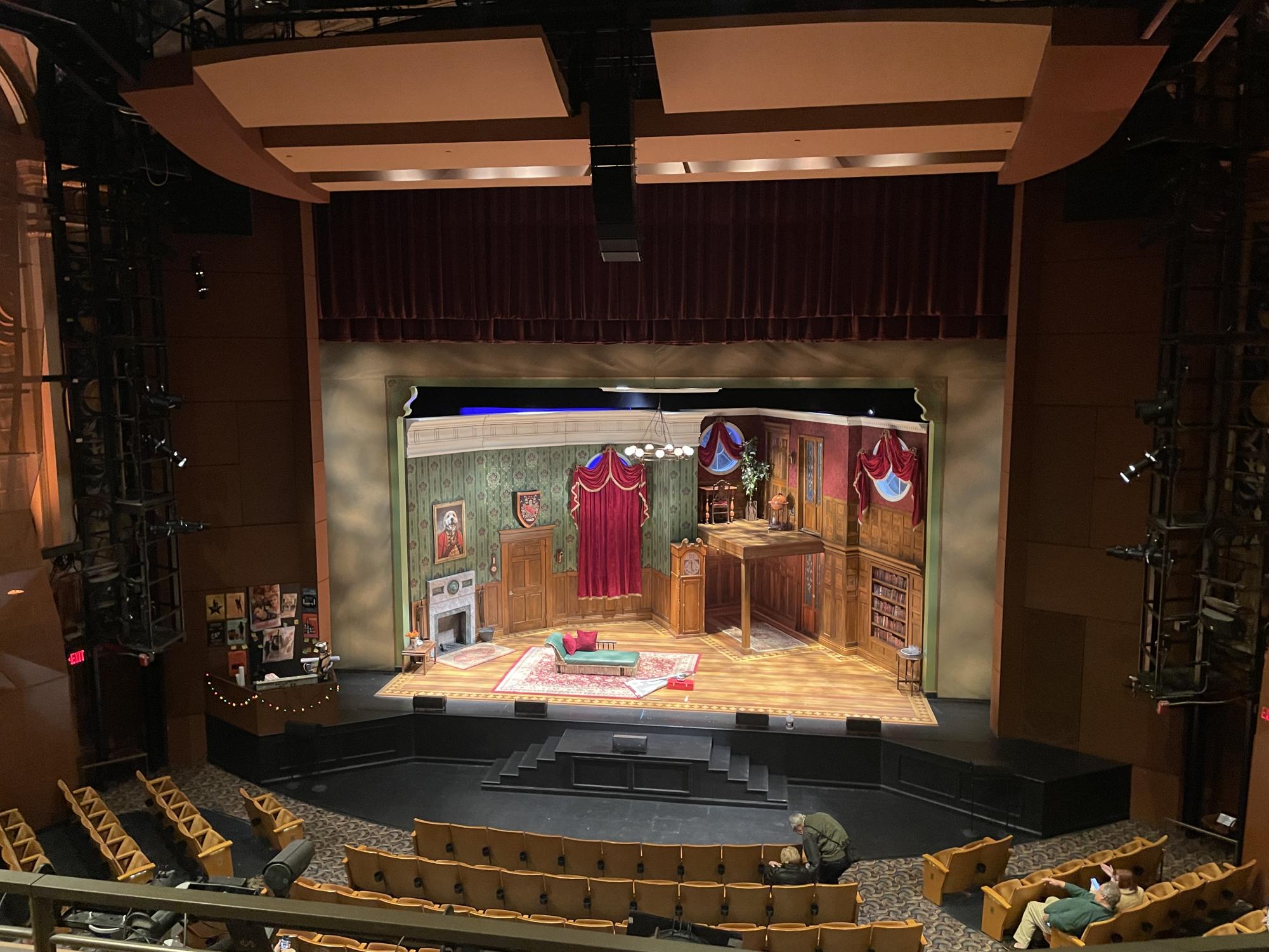“The Play That Goes Wrong,” a humorous satire of theater productions, returned to Playhouse Square in early March as a part of its U.S. Tour. The show, while confusing to explain, is beyond hilarious as it uses stunts, special effects and sometimes just plainly crude humor to produce a wild viewing experience.
The show itself pretends to be a real show called the “Murder at Haversham Manor.” Yet the audience gets to see some of the inner workings of the show, most chiefly the backstage crew —who are all actors in the production of the show playing crew characters—doing their chaotic activities. The show opens with the lights still on and the backstage actors making last-minute adjustments to the set, even calling up a random audience member to help hold a mantelpiece as it gets duct taped on.
“Murder at Haversham Manor” itself starts with Charles Haversham lying dead on his couch where the butler Perkins finds him unconscious. Scared, he alerts the rest of the house. Thomas Colleymoore is the first to arrive on the scene, the overprotective brother of Charles’ fiancée Florence Colleymoore. While she appears to be heartbroken at first, she quickly reveals to the audience that she was having an affair with Cecil Haversham, Charles’ brother. They call the police and Inspector Carter, a rigid, strict actor who attempts to investigate the crime, arrives. When conducting witness interviews, he hears a gunshot and sees Cecil shot dead after he was accused of being the murderer due to the aforementioned affair. With paranoia spreading that the murder was one of the individuals in the house, the first act closes.
The second act opens with the investigator attempting to figure out what is going on. There is drama over a last will and testament, which leaves all of his fortune to Perkins. Later the gardener of the residence, played by the same actor who played Cecil, arrives and with Perkins discovers the truth: The murders are all staged, and are in fact a large conspiracy by Cecil and Carter to get money from him. On cue, Charles reappears alive and well, brandishing a weapon.
That is the best reconstruction of the plot of the story in the story. That first layer of story, though, consists of a series of bits and gags where the show just becomes a trainwreck. At the beginning of the show, the bits were more subdued, with backstage crew frantically running around, things falling down and other items getting lost. As the show progresses, however, these bits become more intense. For example, crazy stunts are used to prop up the body of Florence’s actor, who passed out due to a heart attack. A member of the backstage crew must fill in, and once the original actor returns to good health, the crew member refuses to give up her spot. There is also a large amount of set destruction that occurs, including things falling off of walls and entire floors collapsing.
All of that is combined with various individual comedy bits, where the actors within the play would get to show off their own personalities and antics and do a little improv. For instance, the actor playing Perkins would frequently have to read large compound words off of his hands. Cecil did little jigs and dances. There are also plenty of pop culture references in the script for the entire cast to work with.
Overall, this play had a fun and creative concept that fully immersed itself in silliness and absurdity. Although tightly scripted, it allowed its actors the freedom to improvise as necessary and create some of the funniest moments in the show. In addition to their acting talent, the physicality of the actors’ performances cannot be understated. The complex stunts were technically excellent and hilariously performed. The physical comedy was also greatly helped by the exceptional set. At first glance, it looks ordinary, but its genius is slowly revealed as it carefully and precisely begins to fall apart. Watching the set crumble almost felt like watching a magic show, with the audience left spellbound and wondering how it works. Interactions with the audience and frequent fourth wall breaks made the show feel more immersive and helped keep the audience engaged in the premise.
However, this level of engagement seemed to confuse certain audience members who started to speak out in inappropriate places during the show. These interruptions broke up the flow of the performance in a cringy way, but the actors did a terrific job transforming these uncomfortable moments of heckling into delightful nuggets of humor. Although the script and performances were largely hilarious, some of the gags, especially the physical ones, had a tendency to run past the point of amusement and into awkwardness and boredom. Timing and momentum are incredibly important in a successful comedy, and the select overused and lengthy jokes made the pacing choppy.
But overall, the show was an immensely entertaining and funny way to spend an evening, and one we would highly recommend to Case Western Reserve University students when the show comes back through Playhouse Square.




